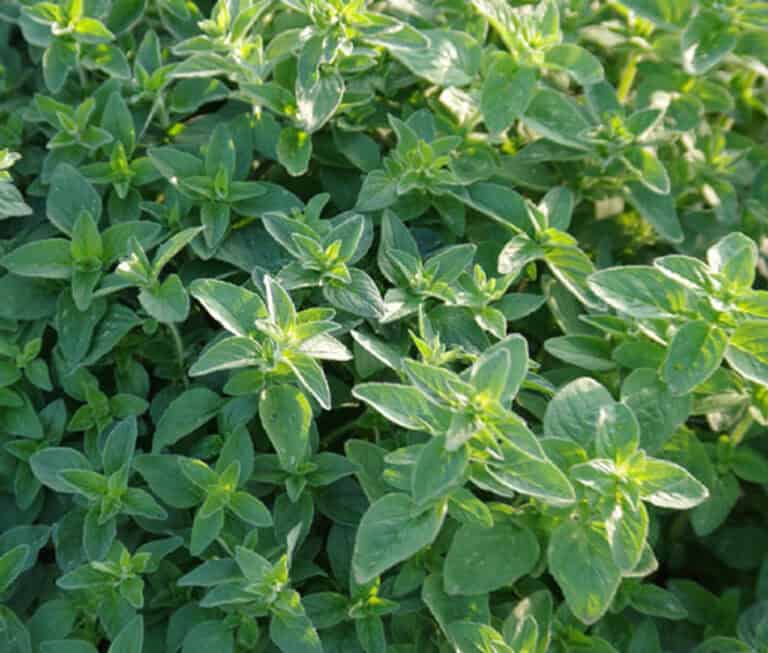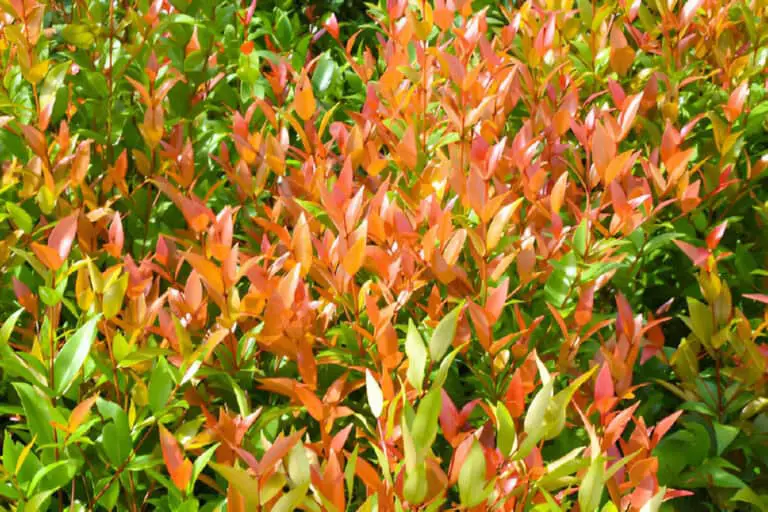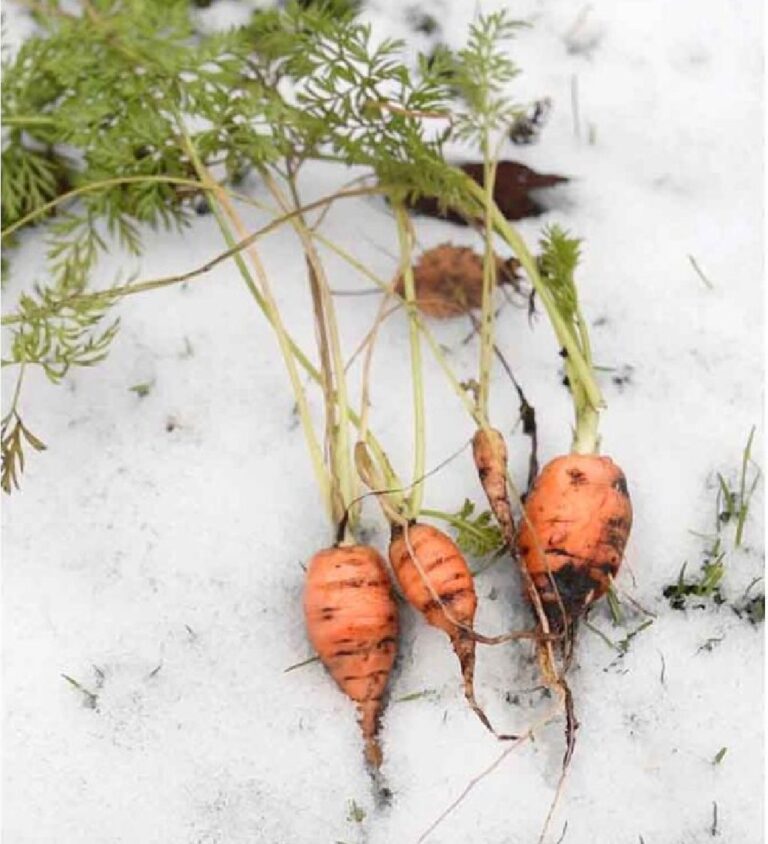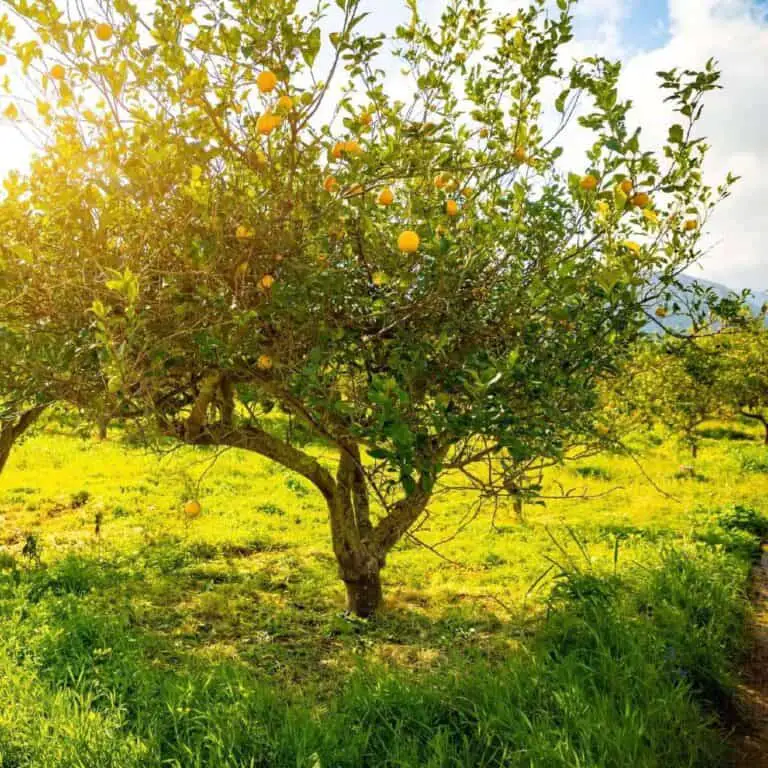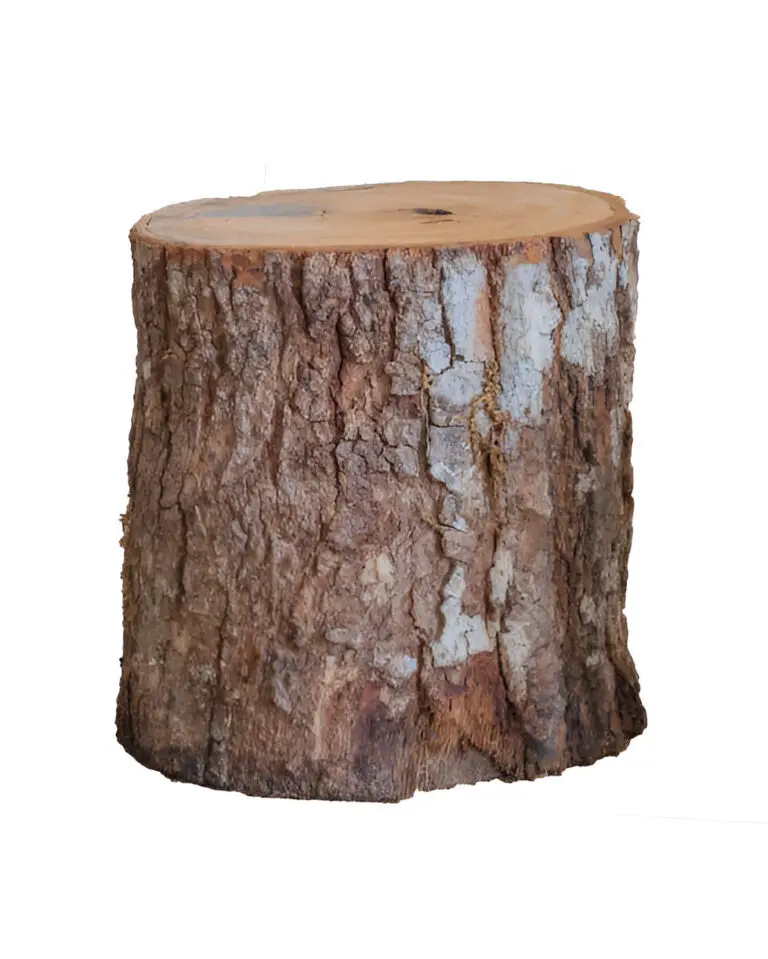Tradescantia Zebrina Caring Tips (Wandering Jew): Plant Care and Growing Guide
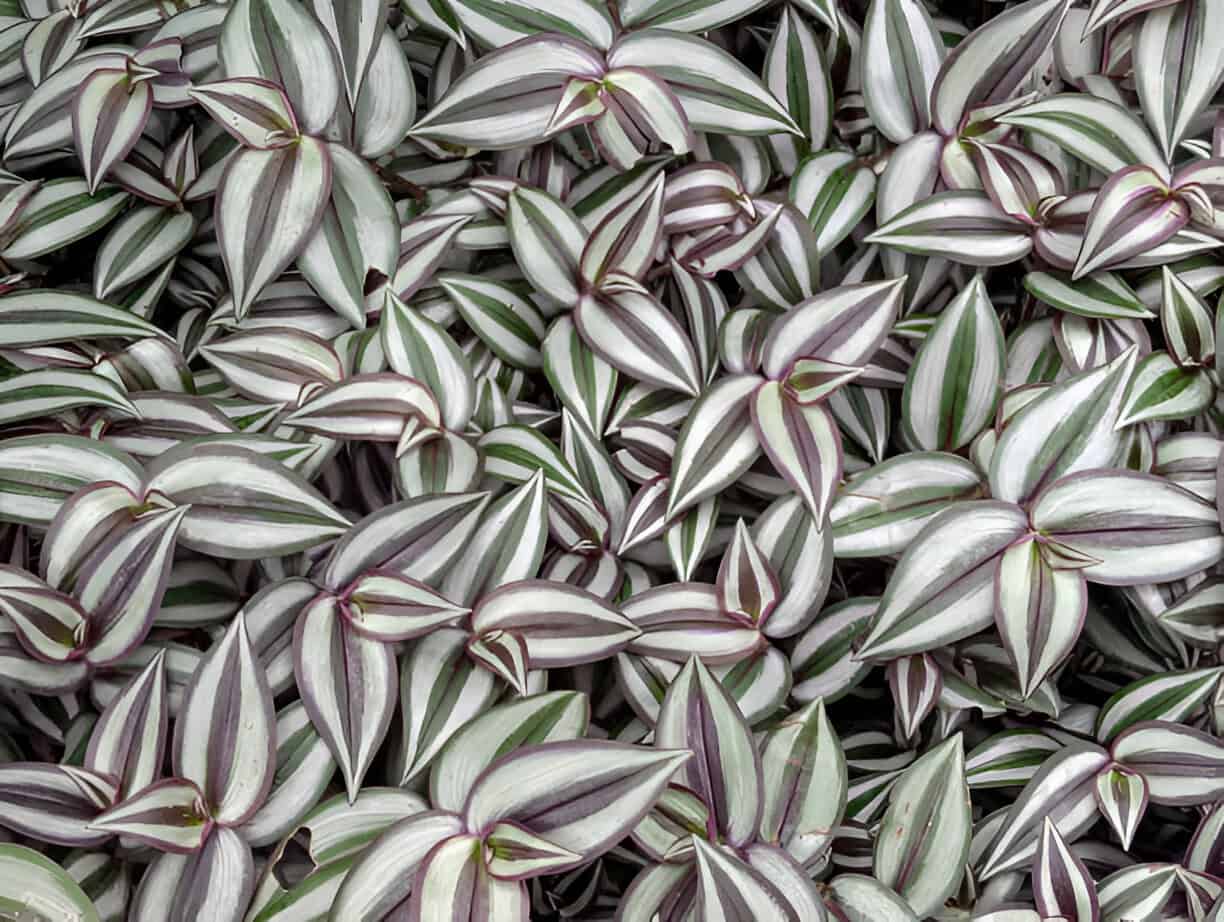
The Wandering jew or Tradescantia Zebrina is a group of plants that would be considered invasive when growing outside. However, this character makes them perfect for growing indoors. It is best grown in hanging baskets because of its colorful leaves coming out of vines that flow out of pots. It’s one of the easiest plants to grow. It’s hard to kill and will bloom tiny flowers among its colorful leaves.
To care for a Tradescantia Zebrina, keep it in temperatures between 60º-80ºF(15.5º-26.6ºC). Water at least once a week, keeping the soil moist but not soggy. Provide high humidity and moderate light for your Wandering Jew to thrive.
This plant can spread across the floor or low surfaces. It can also climb a bit on the wall, fall from a hanging basket, and looks graceful. While it can survive negligence, it will not achieve its full potential.
Here are some simple tips to care for a Wandering Jew. These will help it bloom and grow healthy.
Let’s get started
Understanding Tradescantia Zebrina
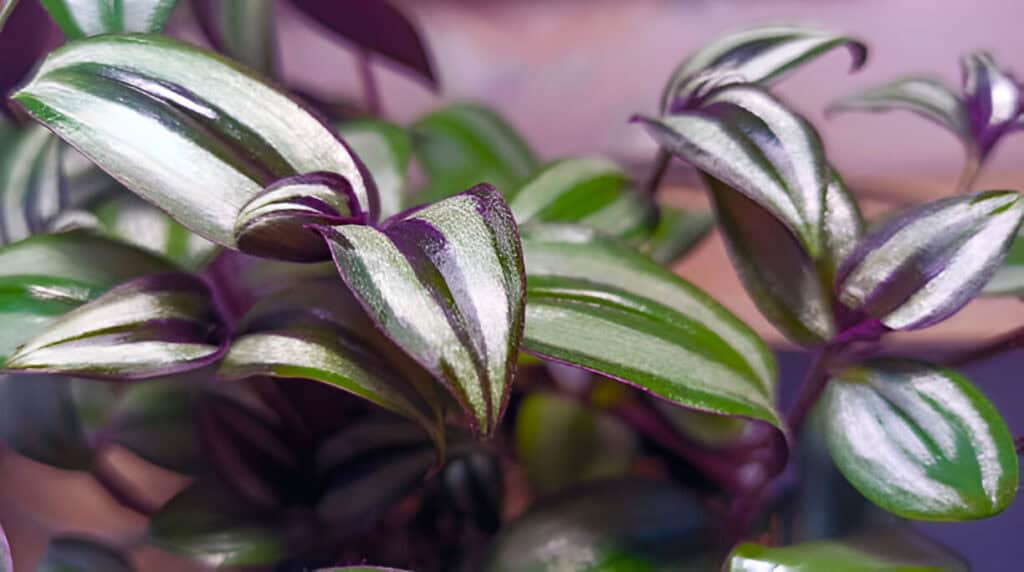
Tradescantia Zebrina, or Wandering Jew, is a stunning houseplant. People love its bold purple and silver stripes on the leaves. This easy-to-grow plant adds a splash of color to any indoor space.
The Wandering Jew goes by several names, including Inch Plant and Spiderwort. It originates from Mexico and Central America, where it thrives in warm, humid environments. Many gardeners appreciate its fast-growing nature and resilience.
Ideal Growing Conditions:
- Light: Bright, indirect sunlight
- Water: Keep soil moist but not soggy
- Humidity: Prefers high humidity levels
| Condition | Requirement |
| Light | Bright, indirect light |
| Water | Evenly moist soil |
| Humidity | Medium to high |
With the right care, Tradescantia Zebrina will reward you with vibrant foliage and rapid growth all year round.
Watering
The Wandering Jew loves water as long as the soil does not become soggy. However, keep in mind that you would rather water the pot more instead of denying the plant from water. Remember that it is regarded as an invasive plant and also helps to cover the soil on large pots, leaving it below the crown of other plants.
Water at least once every 5-7 days to keep the soil with adequate moisture levels. The container used for potting should provide adequate but not excessive drainage.It should hold more water than it gives out. The succulent-like leaves and vines, along with the strong growing foliage, need a lot of water.
If you doubt the amount of watering needed, poke the soil to see the soil’s moisture levels about 2-3 inches below the top soil layer. Please do not wait until the plant starts losing its leaves before you intervene. Although you may not lose the plant immediately, delaying intervention will negatively affect its growth.
Check the water quality used to ensure that it does not have added chemicals like fluoride and chlorine. Use rain, distilled, aged, or filtered water to avoid damaging the soil and killing the plant. Even the water used for misting could introduce impurities in the soil, eventually killing your plant.
Soil drainage, temperature, and humidity are key when deciding how much and how often to water. A container that does not drain easily combined with too much watering will leave the soil soggy. You will also be creating the conditions for root rot.
Lack of water causes the Wandering Jew to lose its color and stunt. Overwatering leads to root rot, a big problem for houseplants. The only fix is repotting. Both instances can result in lost foliage and the eventual death of your plant.
Humidity
The Wandering Jew is an undergrowth plant that will survive in the highest humidity. The moisture content will enhance the beauty and appearance of the leaves. Moreover, humidity also helps clear insects and infections that camp on the leaves.
The shaded areas where the Wandering Jew thrives always come with increased humidity. Mulching for tree plants protects them from heat and helps keep moisture. Indoor spaces like the kitchen, lounge, or the bathroom will provide the perfect humidity for your Wandering Jew.
This plant will appreciate regular misting to keep the area around the leaves moist. Since it prefers a slightly higher level of humidity, you must give it attention by daily misting. Use chemical-free water to avoid damaging the leaves or contaminating the soil.
A pebble tray is a problematic addition with hanging plants or those that trail on surfaces. However, you can still improvise without damaging the aesthetics of the surrounding environment. Evaporation from the pebble trays ensures that the air around your Wandering Jew has sufficient moisture.
An automated humidifier would be an excellent addition to your garden. It keeps the air around the plant moist without demanding too much attention from you. The option also comes with a cost, but it will save your plant from dying.
Soil
The Wandering Jew prefers soil that drains well but retains more water than it gives away. As an undergrowth plant, it is used to moist conditions with the soil bordering wet. However, its behavior is not an invitation to cause your soil to turn soggy.
Use clay or loam soil during potting. If the soil holds too much water, mostly clay, you can add a bit of sand or peat moss to improve drainage. Perlite also helps to improve drainage and aeration while still holding the nutrients that the plant requires.
The commercial potting mix will provide the perfect conditions for the Wandering Jew to grow. You can improve it with compost. Compost releases nutrients slowly, so it reduces the need for constant feeding. Add a lot of soil to the pot because the Wandering Jew is a robust grower, both the roots and foliage.
Care for the soil so that you can maintain its quality long after potting. Use a liquid fertilizer, compost, and organic mulching to avoid introducing chemicals into the soil.
Water and mist your Wandering Jew using aged, filtered, distilled, or rainwater that does not introduce harmful chemicals to the soil. Maintaining the quality of the soil is the only assurance you have that your plant will thrive.
Light
The Tradescantia Zebrina is an extremely colorful houseplant variety but does not thrive in too much light. As mentioned, it forms part of mulching for high-growing tree plants or is used to create a carpet feel in the garden.
It is also hung from balconies and roofs, meaning that it remains shaded most of the time. Such characteristics are indications that too much direct sunlight will be dangerous for your plant.
Keep your Wandering Jew in a shaded area to retain the striking colors of its foliage. The best location is away from the window, inside the lounge, or under the roof where it will be protected from direct sun. The noon sun is especially dangerous because it tends to dry the soil, resulting in dead leaves.
Luckily, the plant will give early signs that it needs light or getting too much light. Additionally, the leaves on the lower sections of the vine start to dry out and fall off when there is insufficient light. Change the position of your plant before it loses more leaves and the entire vine. Luckily, the Wandering Jew will recover very fast when the troublesome condition is corrected.
Loss of leaf color is a clear indication that the Wandering Jew requires a little more light. The leaves will also appear tired and dusty if the light is too much. Find the perfect balance to guarantee a glorious Wandering Jew indoors.
Temperature
This plant prefers an environment where temperatures are always warm. It will not survive frost or freezing temperatures under any circumstance. The ideal temperatures for Wandering Jew range from 60ºF (15.5ºC) to 80ºF (26.6ºC). You’ll often see these temperatures indoors in homes and offices.
Wandering Jew can still survive temperatures as low as 50ºF/10ºC as long as it is not over an extended period. When the temperatures are too low, they freeze both the leaves and the soil. Temperatures must remain below 90ºF (32.2ºC) if they rise. Higher temperatures can dry out leaves, fade their color, and slow down plant growth.
Temperature affects other care procedures, like watering, humidity, and lighting. Areas with high temperatures have a lot of light. The only way to balance the environment is by providing a lot of humidity. If the temperatures are low, reduce humidity and watering. It will save your Wandering Jew from fungal infections and diseases.
Advanced Care Guidelines
The Wandering Jew will tolerate a bit of negligence and even acquire a life of its own. However, it hides a surprise, including flowering, for any owner who does the correct care.
Here are some care tips for Wandering Jew. These will help you grow a stunning houseplant.
Let’s continue.
Flowering
Wandering Jew must get the perfect conditions to flower. A lot of owners have never seen the flowers. They can even appear with an unpleasant intensity because the plant has not gotten the conditions it requires. When conditions are perfect, the Wandering Jew will produce tiny purple, pink or white flowers.
The flowers appear in spring and summer when the weather is warm. Feed your Wandering Jew with a balanced fertilizer. Use mostly liquid foliar or compost. These are rich in nitrogen and phosphorus, which help it bloom. The plant also requires a lot of water and light to produce these beautiful flowers.
Alternatively, the leaves can also be considered flowers due to their equally vibrant colors. When the plant is tended well, it will produce some of the most beautiful vines that can be used for decoration purposes.
They are perfect for vases because they come back to life once placed on water, unlike many flowers that end up dying after a few days.
Fertilization
This plant is a moderate feeder. The best fertilizer is compost manure. It offers balanced nutrients slowly. This helps prevent soil contamination.
Use compost during potting to improve the nutritional quality of your soil. Liquid fertilizer may also be applied twice a year if compost is available to enhance the soil’s quality.
The amount of fertilizer used determines how robust the foliage of your plant will grow.
Pruning
Pruning is almost unnecessary if you provide the necessary growth conditions for your Wandering Jew. This plant is most beautiful when it gets bushy and has a broad crown. Still, the leaves are stunning in their own right, meaning that there will be no need for pruning.
However, you may prune to control disease, shape your plant, or improve your houseplant’s aesthetics. Use a sharp scalpel or knife to remove the affected vines in spring and summer when the plant can recover faster.
Repotting
This is a plant that can survive in almost any condition, so it will rarely require repotting. Further, the growth habit means that the foliage-crown will rarely overgrow the pot. The roots also follow foliage, meaning that the plant will also rarely become rootbound.
Repotting helps give plants more space to grow. It can also fix soil problems, like root rot or chemical buildup. Remove the old vines from the pot, dip them in water to clear the soil, and place them in the new pot. Pour the potting mixture to fill the container. Remember to water the pot and place it in a warm place. Your plant will recover within days.
Propagation
The Wandering Jew can be propagated using cuttings or division. During division, split a few vines at the root and transfer them to the new pot. The soil should be moist and the environment warm. When using cuttings, they are placed in rooting-hormones-enhanced water for a few days. The roots will then emerge, and your plant will be ready for potting in a week.
Pest Prevention
Aphids, root rot, and spider mites are the most common problems when dealing with Wandering Jew. They attack the plant when the temperatures are too low, and the humidity is high. Wash them away using sprinkling water or apply insecticides that can sip into the soil.
FAQs on Tradescantia Zebrina
Is Tradescantia Zebrina Poisonous?
The Wandering Jew is a safe plant around children and pets like cats and dogs. Neither the leaves nor sap from cut vines will affect the health of your plant.
Why are my Tradescantia Zebrina leaves dropping?
The soil is too dry or too wet. If watering isn’t the issue, your Wandering Jew might be getting too much light or heat. Further, check to see that the soil is not soaked with chemicals.

